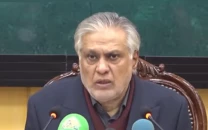Between ban and blind acceptance
The opposite approach is uncritical acceptance, where students are allowed to let AI dominate their assignments

Artificial Intelligence has already entered our classrooms, whether we are ready for it or not. Universities everywhere are rushing to issue broad policies, often written in the cautious language of regulation. Yet in day-to-day teaching, those policies feel distant. Teachers confront students who are already experimenting with AI in ways that no guideline can fully anticipate. The real question is not whether AI belongs in education, but how we can turn it into a tool for genuine learning rather than a shortcut.
Some argue for a complete ban. The reasoning is straightforward: if students can outsource essays or problem-solving to a machine, how will they develop authentic understanding? This temptation is strong in contexts where plagiarism and dishonesty already pose challenges. But outright prohibition rarely works. Instead of curbing dependency, it drives use underground and fosters mistrust between students and faculty. The classroom becomes less about learning and more about surveillance.
The opposite approach is uncritical acceptance, where students are allowed to let AI dominate their assignments. This might create the illusion of efficiency, but it weakens the very abilities universities are meant to cultivate critical reasoning, creativity, and a personal voice. If unchecked, it risks producing graduates who can only reproduce machine-generated text without judgment or originality.
The more sustainable option lies between these extremes. In my own classroom, I have seen how conditional openness reshapes behaviour. When students are asked to declare how they used AI and reflect briefly on what worked and what failed, the tool becomes a mirror rather than a mask. They begin to notice its flaws, weigh its usefulness, and ironically rely less on it than they initially expected. Transparency, rather than prohibition, nurtures responsibility.
At times, deliberate restriction becomes essential. In courses focused on building foundational skills — such as mathematics, languages or basic sciences — certain tasks are kept entirely free of AI involvement. These "AI-free zones" allow learners to demonstrate unaided ability and ensure that core competencies are developed without shortcuts. In more advanced settings, however, AI can be introduced as a collaborative element, treated almost like a team participant whose contributions must be assigned, evaluated and critiqued. Rather than replacing human effort, this approach strengthens judgment and cultivates the capacity to manage technology critically.
What becomes clear is that a single rule cannot govern all situations. A first-year undergraduate cannot be treated the same as a doctoral scholar. Different levels of study require different balances of independence and technological integration. Policies should be flexible enough to respect these distinctions, rather than trying to impose a one-size-fits-all standard.
As a member of the faculty in a public sector university, I believe the stakes in Pakistan are particularly high. We face limited resources, uneven levels of student preparedness and constant pressure to modernise. Artificial Intelligence presents both a risk and an opportunity. Ignoring it or treating it solely as a threat will leave graduates entering a workforce where AI literacy is expected but missing from their training. On the other hand, handing it over without guidance risks hollowing out intellectual growth. Both extremes are dangerous.
The students themselves are watching how their teachers respond. If we appear fearful, contradictory or dismissive, they too will treat AI with confusion or carelessness. If we demonstrate balance, embracing its possibilities while highlighting its limits, they will learn to navigate it with maturity. In this sense, the responsibility of educators is not just about rules; it is about modeling an attitude.
Artificial Intelligence is now an inevitable part of education. The real task is to turn it into a means of deeper learning rather than shallow shortcuts. This requires clarity, trust and active guidance from educators. While policies may outline the rules, it is in the classroom where these rules take shape and where the future of teaching and learning with AI will ultimately be defined.















COMMENTS
Comments are moderated and generally will be posted if they are on-topic and not abusive.
For more information, please see our Comments FAQ